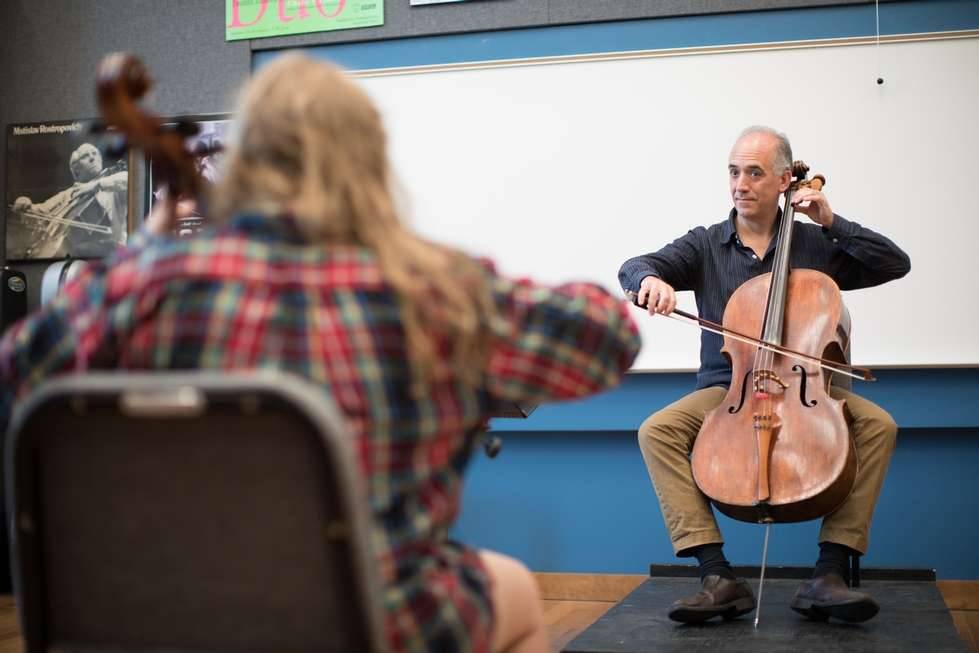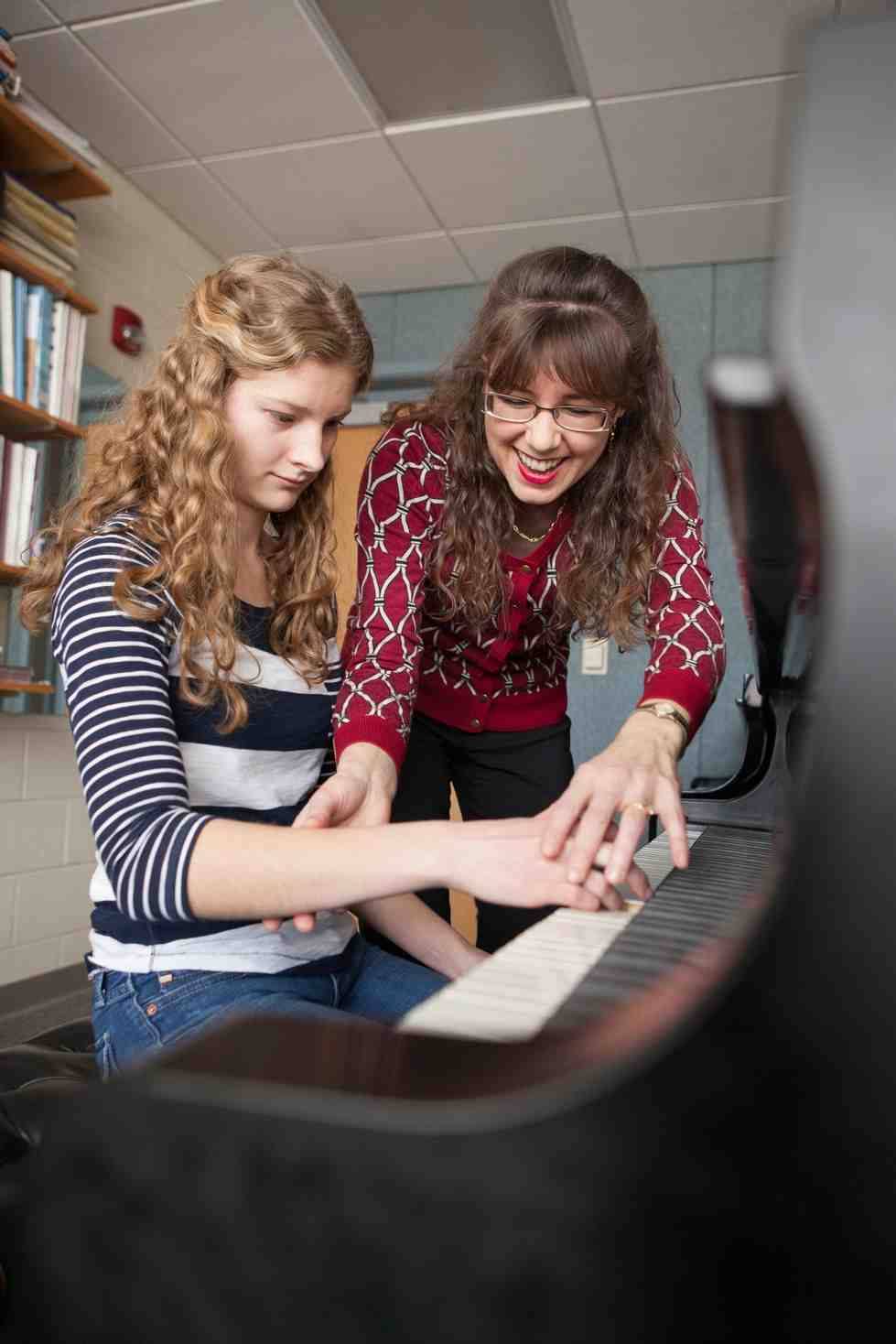Music Program Audition Information
This page is about auditioning to be a major or minor in Music at Grand Valley State.
If you are a non-major student interested in auditioning for a performing ensemble, please visit one of the links below.
Audition Dates 2024-2025
Friday, August 16, 2024 (for Fall 2024 Admission)
Application Due by August 1
Saturday, November 2, 2024
Application Due by October 2
Friday, January 31, 2025
Application Due by January 1
Saturday, February 15, 2025
Application Due by January 15
Saturday, March 15, 2025
Application Due by February 15
Friday, April 4, 2024
Application Due by March 4
If audition dates have passed, please email Bridgett Vanderhoof about setting up a custom and/or virtual audition at [email protected]

General Audition Information

1. Complete the Application for Music Program Admission and Scholarship for each instrument you wish to audition for and return at least one month prior to the audition date requested. You will receive your audition day schedule approximately 10 days prior to the audition date you selected.
2. Acceptance into our music program and scholarship awards are contingent upon acceptance by GVSU. It is best to apply early so that you receive word of your GVSU acceptance by your audition date.
3. Students interested in music scholarships are advised to audition early. Consideration for scholarship concludes on the March audition date. Learn more about scholarships here.
4. Piano accompaniment for instrumental auditions is not expected and is not provided. We will, however, provide a pianist for auditioning vocalists.
5. Students with 2 or more years of piano experience have the option to take a Piano Placement Test on audition day. The Piano Placement Test consists of a prepared piano piece, scales, and sight-reading. It may allow incoming students to test out of required Keyboard Musicianship courses. Learn more about Keyboard Musicianship course requirements here.
Audition Information by Instrument
- Two contrasting movements (one lyrical and one technical) from a solo work
- One etude
- All major and minor scales
- Sight-reading
- Scales (three octaves) through four sharps and flats.
- One movement from one of the Bach 6 suites and a movement from a concerto of Haydn or Boccherini, Vivaldi Sonatas, Faure Elegy or comparable literature.
- Sight reading.
- All major and minor scales (two octaves except E, F, F#, & G, three octaves).
- Two contrasting solos or concerto movements or one solo and one study from either Rose 40 or Cavallini 30 Caprices.
- Sight-reading.
- Scales (two octaves minimum) through four sharps and four flats.
- Two solos: one from the Baroque and one from any other period.
- Sight-reading.
- All major and natural scales (two octaves).
- Two solos or contrasting movements from compositions comparable to Guilmant Morceau Symphonique, Barat Andante and Allegro, or Galliard Sonata.
- Sight-reading.
- All major and minor scales (two octaves) and the chromatic scale (three octaves).
- Two contrasting solos or movements or one solo and an etude from or comparable to Cavally (ed.) Melodious and Progressive Studies, Books I or II.
- Sight-reading.
- Two- and three-octave major and minor scales.
- Any two studies by Fernando Sor or Matteo Carcassi, or comparable pieces.
- Sight-reading.
- All major and minor scales and a two-octave chromatic scale (F-F).
- One movement of a Mozart concerto or a comparable work.
- Sight-reading.
- All major and minor scales (two octaves).
- Two contrasting movements from either a Baroque sonata by Handel or Marcello or a comparable work, or one solo and one technical study from Ferling or Barret.
- Sight-reading.
For audition requirements, please contact Dr. Gregory Crowell at [email protected].
- All major and harmonic minor scales and arpeggios (four octaves).
- One Baroque work to be chosen from: A Baroque suite (two contrasting movements); a three-part invention; or a Prelude and Fugue from the Well Tempered Clavier Book I or II (Bach); or a comparable work by another Baroque composer (such as a Scarlatti Sonata).
- One movement of a Classical sonata by Haydn, Clementi, Hummel, Mozart, or Beethoven (excluding Op. 49 Beethoven).
- One piece from the Romantic, Impressionistic, or Twentieth Century (for example: Chopin Nocturnes; Brahms Rhapsodies, Op. 79; Debussy Preludes, Ginastera Danzas Argentinas, Copland 4 Piano Blues).
- Memory is expected.
- Sight-reading.
- Play all major and minor scales on marimba or xylophone.
- Demonstrate standard rudiments on snare drums, basic rhythms on drum set, and ability to tune timpani.
- Perform solos from two of the following three groups: (1) rudiment snare, concert snare drum, or multiple percussion; (2) timpani; (3) marimba, xylophone or vibraphone.
- Sight-reading.
- Scales: Chromatic, All Majors, and All Harmonic and Melodic Minors
- Etudes: Two contrasting etudes from the Ferling 48 Famous Studies
- Repertoire: One or two movements or one or two pieces to be
selected from the following:
Alto Saxophone and Piano: Glazounov; Concerto Creston; Sonata Maurice; Tableaux de Provence Milhaud; Scaramouche Ibert; Concertino da Camera Heiden; Sonata Koechlin; Etudes
Tenor Saxophone and Piano:
Villa Lobos; Fantasia Platti / Rousseau; Sonata in G Major
Singelee; Adagio et Rondo Demersseman;
Premier Solo
Andante et Bolero Piazzolla; Histoire du Tango
- Sight-reading.
Tenor Trombone
- All major and natural minor scales (two octaves).
- Two contrasting movements from Guilmant's Morceau Symphonique, Barat's Andante and Allegro, Hindemith 's Sonata or a comparable work.
- Sight-reading.
Bass Trombone
- All major and natural minor scales (two octaves).
- Two contrasting movements from Hartley's Sonata Breve, Hindemith's Drei Leichte Stucke, Jacob's Cameos or a comparable work.
- Sight-reading.
- Major and minor scales (two octaves when possible)
- Two contrasting etudes, solos, or movements comparable to Charlier's 36 Etudes, Balay's Prelude et Ballade, Goedicke's Concert Etude, or movements from the Haydn, Hummel, or Arutunian concertos.
- Sight-reading
- All major and minor scales (two octaves).
- Two solos or contrasting movements from compositions comparable to Barat Andante and Allegro, Haddad Suite for Tuba, Hogg Sonatine or Bach Air and Bouree.
- Sight-reading.
- Scales (three octaves) through four sharps and flats.
- Two contrasting solos or movements, including one from J.S. Bach's unaccompanied cello suites.
- One etude or technical study.
- Sight-reading.
- Two contrasting solos or movements of your choice.
- All major and minor scales (three octaves).
Three memorized solo works of contrasting nature including:
- English language art song composed after 1900
- One foreign language art song or aria
- One additional art song or music theatre selection of your
choice
Note: We will provide pianists for auditioning vocalists. Sight-Reading for vocalists will also take place in the audition room.
